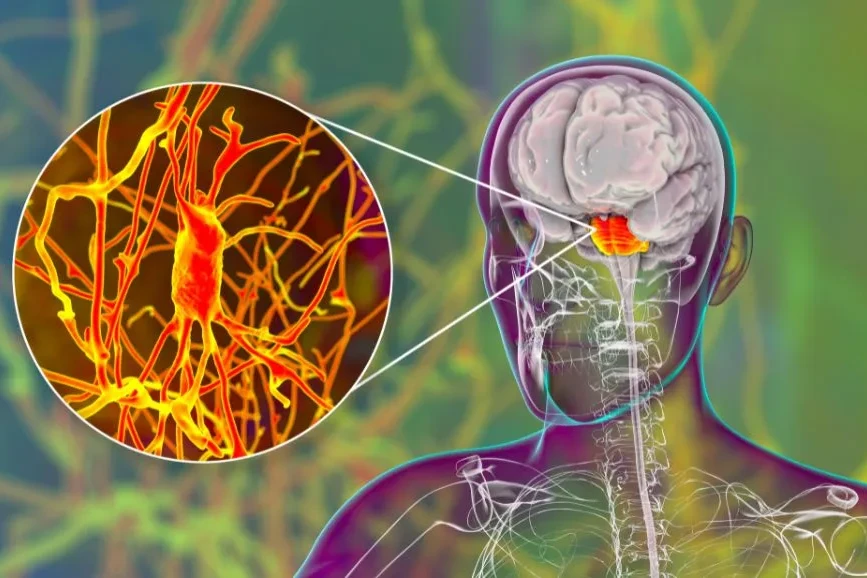Welcome to our comprehensive guide on Spinocerebellar Ataxia (SCA), a rare neurodegenerative inherited disease that primarily affects the cerebellum. In this guide, we will delve into the various aspects of SCA, including its genetic mutations, impact on health and life, and available treatment options. Whether you or a loved one are affected by SCA or you simply want to learn more about this condition, this guide will provide the information you need.
Table of Contents
ToggleEtiology of Spinocerebellar Ataxia
Spinocerebellar Ataxia is a complex neurodegenerative disorder caused by various genetic mutations. One of the most common types of genetic mutations associated with Spinocerebellar Ataxia is trinucleotide repeat expansions. These expansions occur in specific genes, such as SCA1, SCA2, SCA3, and SCA6. The repeat expansions lead to the production of abnormal proteins, disrupting normal cellular processes in the cerebellum.
Spinocerebellar Ataxia can be inherited through autosomal dominant or autosomal recessive inheritance patterns. In cases of autosomal dominant inheritance, each newborn has a 50% chance of inheriting the mutated gene from an affected parent. Autosomal recessive inheritance occurs when both parents carry a single copy of a mutated gene, and the child inherits two copies, leading to the development of Spinocerebellar Ataxia.
It is important to note that while these genetic mutations account for many cases of Spinocerebellar Ataxia, the exact genetic cause remains unknown in a significant percentage of individuals.
Genes Associated with Spinocerebellar Ataxia and Inheritance Patterns
| Gene | Trinucleotide Repeat Expansion | Inheritance Pattern |
|---|---|---|
| SCA1 | CAG | Autosomal Dominant |
| SCA2 | CAG | Autosomal Dominant |
| SCA3 | CAG | Autosomal Dominant |
| SCA6 | CAG | Autosomal Dominant |
| Other Types | Varies | Autosomal Recessive |
Epidemiology of Spinocerebellar Ataxia
Spinocerebellar Ataxia (SCA) is a heterogeneous group of disorders with varying global prevalence. It is estimated that SCA affects 1 to 5 per 100,000 individuals worldwide. In Europe, the prevalence ranges from 0.9 to 3 per 100,000, with some geographical variation.
SCA encompasses different subtypes, with specific types being more prevalent than others. The most common types of SCA include:
- SCA3: This type accounts for 25-50% of all cases of SCA.
- SCA2: Approximately 13-18% of SCA cases are attributed to SCA2.
- SCA6: SCA6 is responsible for 13-15% of SCA cases.
- SCA7: While not as prevalent as SCA3, SCA7 remains a significant subtype.
It’s important to note that the frequency of these types can vary in different regions. For example, SCA2 is more common in South Korea and India.
To provide a visual representation of the prevalence and distribution of SCA subtypes, here is a table summarizing the data:
| SCA Subtype | Global Prevalence | European Prevalence |
|---|---|---|
| SCA3 | 25-50% | Varies |
| SCA2 | 13-18% | Varies |
| SCA6 | 13-15% | Varies |
| SCA7 | Varies | Varies |
Understanding the epidemiology of Spinocerebellar Ataxia provides valuable insights into its global prevalence, variations within Europe, and the most prevalent subtypes. This knowledge contributes to enhanced awareness, accurate diagnosis, and improved care for individuals affected by this debilitating condition.
Pathophysiology of Spinocerebellar Ataxia
The exact pathogenesis of Spinocerebellar Ataxia (SCA) is not fully understood, but it primarily involves genetic mutations that lead to abnormal protein production and misfolding. These genetic mutations, particularly trinucleotide repeat expansions, result in the production of mutated proteins that are prone to misfolding.
One example of these misfolded proteins is ataxins, which are encoded by expanded CAG repeats. These misfolded proteins accumulate and form intranuclear inclusions within the Purkinje cells. Purkinje cells are the principal neurons in the cerebellum responsible for coordinating movement and maintaining balance.
As these misfolded proteins accumulate, they interfere with normal cellular functions and disrupt essential processes within the cells. This accumulation leads to the degeneration and eventual death of Purkinje cells, contributing to the progressive loss of coordination and movement observed in SCA.
In addition to protein misfolding and intranuclear inclusions, mitochondrial dysfunction plays a role in the pathophysiology of SCA. Mitochondria are responsible for producing energy within cells, and dysfunction in these crucial cellular powerhouses further contributes to the neurodegenerative process in SCA.
Overall, the pathophysiology of SCA involves a complex interplay of genetic mutations, protein misfolding, intranuclear inclusions, Purkinje cell degeneration, and mitochondrial dysfunction. Understanding the underlying mechanisms of SCA is vital for the development of effective treatments and therapies aimed at slowing down or halting the progression of this debilitating disease.
Histopathology of Spinocerebellar Ataxia
Spinocerebellar Ataxia (SCA) is characterized by various histopathological findings that help in understanding the disease’s progression and underlying mechanisms. Gross examination of the brain in individuals with SCA often reveals cerebellar atrophy, where the cerebellum shows a noticeable reduction in size. This atrophy is accompanied by the enlargement of the lateral ventricles, indicating the presence of brain abnormalities.
On histopathological analysis, individuals with SCA exhibit significant loss of neurons, particularly in the cerebellum and other regions of the central nervous system. Notably, Purkinje cells, which are crucial for coordinating muscle movement, are prominently affected. The loss of these neurons contributes to the characteristic motor deficits observed in SCA.
Immunohistochemical studies have also revealed the presence of ubiquitin-positive intranuclear and cytoplasmic inclusions in certain types of SCA. These inclusions are aggregations of ubiquitin-tagged proteins and are indicative of protein misfolding and accumulation. The presence of these ubiquitin-positive inclusions further supports the role of abnormal protein handling and processing in the disease pathophysiology.
Overall, histopathological examination plays a crucial role in confirming the diagnosis of Spinocerebellar Ataxia and provides valuable insights into the underlying changes in the brain. By understanding the specific histopathological features associated with SCA, researchers can develop targeted therapeutic strategies aimed at preventing neuronal loss, promoting neuroprotection, and ultimately improving the quality of life for individuals living with this challenging condition.

Clinical Features and Diagnosis of Spinocerebellar Ataxia
Spinocerebellar Ataxia (SCA) is characterized by a range of clinical features that can vary from person to person. The onset of symptoms is typically gradual, often beginning with subtle coordination difficulties that progress over time. Symptoms may include:
- Gait instability: Individuals with SCA may experience unsteady and uncoordinated movements while walking.
- Tremors: Some individuals may develop involuntary shaking or trembling in their limbs.
- Balance problems: Maintaining balance and stability can be challenging for individuals with SCA.
- Speech difficulties: SCA can affect speech production, resulting in slurred or slow speech.
In evaluating possible cases of SCA, it is important to consider the patient’s family history. SCA can be inherited, and individuals with a family history of the condition may have an increased risk of developing it themselves.
Diagnosing SCA typically involves genetic testing to identify specific gene mutations associated with the condition. Genetic testing can help confirm a diagnosis and provide information about the specific subtype of SCA. However, in some cases, the responsible gene mutation may not be identified.
In such instances, brain imaging techniques, such as a CT scan or MRI, may be used to detect brain abnormalities commonly observed in individuals with SCA. These imaging studies can help support the diagnosis by revealing cerebellar atrophy or other structural changes in the brain.
The image above illustrates the importance of brain imaging in the diagnosis of SCA. By visualizing the brain’s structure, healthcare professionals can identify any abnormalities that may be indicative of the condition.
| Diagnostic Methods for Spinocerebellar Ataxia | Advantages | Limitations |
|---|---|---|
| Genetic Testing |
|
|
| Brain Imaging (CT scan or MRI) |
|
|
Treatment Options for Spinocerebellar Ataxia
Although there is no cure for Spinocerebellar Ataxia, various treatment options can help manage the symptoms and improve the quality of life for individuals with SCA. Spinocerebellar Ataxia treatment options include:
- Physical therapy: Physical therapy plays a crucial role in improving muscle strength, balance, and coordination in individuals with SCA. Therapists can design customized exercise programs to target specific motor impairments and help improve mobility.
- Occupational therapy: Occupational therapy focuses on enhancing daily functioning and independence. Therapists can teach individuals with SCA adaptive techniques, recommend assistive devices, and modify the environment to improve activities of daily living.
- Speech therapy: Speech therapy can help improve speech difficulties and swallowing problems commonly associated with SCA. Therapists work on speech exercises, swallowing techniques, and communication strategies to enhance overall communication skills.
- Stem cell therapy: Stem cell therapy is an innovative approach that holds promise in the treatment of Spinocerebellar Ataxia. It involves using stem cells to replace damaged cells and promote tissue repair in the cerebellum. While it is still an emerging field, ongoing research shows potential benefits for individuals with SCA.
- Neurorehabilitation: Neurorehabilitation programs focus on optimizing brain function and promoting neurological recovery. These programs combine various therapies, including physical therapy, occupational therapy, speech therapy, and cognitive training, to address multiple aspects of SCA and improve overall functioning.
By incorporating these treatment options into a comprehensive management plan, individuals with Spinocerebellar Ataxia can experience improved symptoms, enhanced quality of life, and better overall well-being.

Achieving Optimal Results with a Multidisciplinary Approach
The treatment of Spinocerebellar Ataxia often requires a multidisciplinary approach, involving collaboration between different healthcare professionals. By combining the expertise of physical therapists, occupational therapists, speech therapists, and other specialists, a comprehensive and individualized treatment plan can be developed to address the unique needs of each person with SCA.
Research studies and clinical trials continue to explore new therapeutic interventions and advancements in the field of Spinocerebellar Ataxia. As more is understood about the underlying mechanisms of the disease, additional treatment options may become available, offering hope for improved outcomes and eventual cures.
Impact on Daily Life and Prognosis of Spinocerebellar Ataxia
Spinocerebellar Ataxia can have a significant impact on daily life, leading to cognitive problems, functional limitations, and reduced quality of life. The progressive nature of the disease and its effects on coordination and balance can result in difficulties performing simple tasks, such as walking, eating, and speaking. These cognitive problems and functional limitations can greatly disrupt daily routines and hinder independence.
The rate of disease progression in Spinocerebellar Ataxia varies depending on the specific subtype and the age of disease onset. Some forms of SCA progress slowly, while others have a more rapid course. Individuals with early-onset SCA tend to experience a faster disease progression and may develop severe functional limitations at a younger age.
Unfortunately, there is currently no known cure for Spinocerebellar Ataxia. The disease progression and impact on daily life can be challenging for individuals and their families. However, with appropriate management, support, and rehabilitation measures, individuals with SCA can maintain a fulfilling life and adapt to their changing abilities.
It is crucial for individuals with SCA to receive comprehensive care that addresses their physical, emotional, and social needs. This may involve a multidisciplinary approach, including neurologists, physical therapists, occupational therapists, speech therapists, and mental health professionals.
By focusing on symptom management, functional improvements, and maintaining a positive mindset, individuals with Spinocerebellar Ataxia can enhance their quality of life and find ways to thrive despite the challenges they face.
Impact of Cognitive Problems
One of the significant challenges faced by individuals with Spinocerebellar Ataxia is cognitive dysfunction. Cognitive problems can range from mild difficulties with attention and concentration to more severe impairments in memory, executive functions, and information processing. These cognitive deficits can impact daily activities, work performance, and overall quality of life.
The underlying mechanisms of cognitive dysfunction in SCA are not yet fully understood. However, it is believed that the cerebellum, which is primarily affected in SCA, plays a crucial role in cognitive processes. The cerebellum has extensive connections with other brain regions involved in cognitive functioning, such as the prefrontal cortex.
Strategies for managing cognitive problems in Spinocerebellar Ataxia include cognitive rehabilitation techniques, compensatory strategies, and environmental modifications. Additionally, individuals with SCA and their families can benefit from education, counseling, and support groups to better understand and cope with the challenges posed by cognitive impairments.
Functional Limitations and Quality of Life
Functional limitations are a hallmark feature of Spinocerebellar Ataxia and can significantly impact an individual’s ability to perform activities of daily living. Walking, balance, coordination, and fine motor skills are often affected, making routine tasks challenging or even impossible without assistance.
Functional limitations can lead to increased dependence, reduced mobility, and decreased participation in social and recreational activities. This can have a detrimental effect on an individual’s quality of life, leading to feelings of frustration, isolation, and loss of independence.
Physical and occupational therapy play a crucial role in managing functional limitations caused by Spinocerebellar Ataxia. These therapies focus on improving mobility, balance, coordination, and strength. Assistive devices, such as walking aids, can also help enhance independence and functional ability.
| Functional Limitations | Impact on Quality of Life |
|---|---|
| Difficulty with walking and balance | Reduced mobility and increased risk of falls |
| Coordination problems | Challenges in performing fine motor tasks (e.g., writing, buttoning clothes) |
| Speech difficulties and swallowing problems | Impaired communication and reduced enjoyment of food and drink |
| Impaired eye movements | Difficulty reading, watching TV, or driving |
Despite the challenges posed by functional limitations, individuals with Spinocerebellar Ataxia can still lead meaningful and fulfilling lives. Adaptive strategies, support from healthcare professionals and caregivers, and assistive technologies can help individuals maximize their independence and maintain a good quality of life.
Disease Progression and Prognosis
The progression of Spinocerebellar Ataxia varies depending on the subtype and individual factors. Some forms of SCA progress slowly over many years, while others have a more rapid course with significant functional decline in a shorter period. The age of disease onset also plays a role in disease progression, with earlier onset generally associated with a worse prognosis.
SCA is a progressive condition, meaning that symptoms tend to worsen over time. The rate of disease progression can be unpredictable, even among individuals with the same subtype. Progressive loss of coordination, balance, and mobility can eventually lead to severe disability and the need for assistive devices or caregiving support.
It is important for individuals with SCA to have regular medical follow-ups to monitor disease progression, manage symptoms, and adjust treatment plans accordingly. A comprehensive approach to care that addresses physical, cognitive, and emotional well-being can help individuals maintain the best possible quality of life throughout the progression of Spinocerebellar Ataxia.
Research and Future Directions for Spinocerebellar Ataxia
Ongoing research in the field of Spinocerebellar Ataxia is dedicated to deepening our understanding of the underlying genetic mechanisms, identifying potential therapeutic targets, and developing new treatment approaches. Genetic studies play a crucial role in unraveling the complexities of SCA and uncovering novel genes associated with the disease.
Scientists and researchers are conducting clinical trials and research studies to explore promising therapeutic interventions for Spinocerebellar Ataxia. These investigations include gene therapies and targeted drug treatments, aiming to slow down the progression of the disease and alleviate its symptoms. By focusing on these cutting-edge therapeutic approaches, we hope to bring new hope and improved quality of life to individuals affected by SCA.
Current Research Focus Areas
- Genetic studies to identify novel genes associated with Spinocerebellar Ataxia
- Investigations into potential therapeutic interventions, such as gene therapies and targeted drugs
- Exploration of the underlying molecular mechanisms and pathways involved in SCA
- Development of neuroprotective strategies to prevent or slow down the neurodegeneration in SCA
- Identification of biomarkers for early detection and monitoring of disease progression
- Collaboration with international research teams to share knowledge and resources

Example Clinical Trial
To provide a glimpse into the ongoing clinical trials and research studies, here is an example:
| Study Title | Phase | Objective | Status |
|---|---|---|---|
| Gene Therapy for SCA3 | Phase 2 | To evaluate the safety and efficacy of gene therapy in slowing down disease progression | Ongoing |
This Phase 2 clinical trial aims to assess the potential of gene therapy as a therapeutic intervention for Spinocerebellar Ataxia Type 3 (SCA3). Researchers are investigating the safety and efficacy of introducing normal copies of the mutant gene into affected individuals using viral vectors. The trial is currently ongoing, and the results hold the promise of advancing our understanding and treatment options for SCA3.
Support and Resources for Individuals with Spinocerebellar Ataxia
Living with Spinocerebellar Ataxia can be challenging, both for individuals with the condition and their caregivers. Fortunately, there are various support and resources available to help navigate the journey. These include:
Patient Support Groups
Joining patient support groups can provide invaluable emotional support and a sense of belonging. These groups bring together individuals who understand the daily challenges of living with Spinocerebellar Ataxia, offering an opportunity to share experiences, exchange coping strategies, and offer encouragement. Many patient support groups also organize educational events and social activities to foster connections within the community.
Counseling Services
Seeking counseling services can be beneficial for individuals and their families affected by Spinocerebellar Ataxia. Counselors and therapists specializing in neurodegenerative conditions can provide professional guidance, coping strategies, and emotional support. Counseling sessions can help individuals navigate the psychological and emotional impact of the condition, manage stress and anxiety, and develop resilience.
Assistive Devices
Assistive devices play a significant role in enhancing independence and improving daily functioning for individuals with Spinocerebellar Ataxia. Walking aids, such as canes or walkers, provide stability and support while navigating uneven surfaces or walking longer distances. Communication devices, like speech-to-text software or communication boards, can assist individuals with speech difficulties in expressing their thoughts and needs effectively.
Caregiver Support
Caregivers of individuals with Spinocerebellar Ataxia also require support and resources to manage their responsibilities effectively. Caregiver support groups offer a safe space for caregivers to share their experiences, seek advice, and find emotional support from others who understand the unique challenges they face. Furthermore, respite care programs can provide temporary relief for caregivers, allowing them time to rest and recharge.
Conclusion
Having a comprehensive understanding of spinocerebellar ataxia (SCA) is crucial to grasp the full impact it can have on individuals’ health and daily lives. This guide has provided a detailed overview of the etiology, epidemiology, pathophysiology, clinical features, diagnosis, treatment options, prognosis, research, and resources related to SCA.
By delving into the complexities of SCA, individuals and their caregivers can navigate the challenges associated with the disease more effectively. Armed with knowledge about the genetic mutations and trinucleotide repeat expansions that cause SCA, potential risk factors, and the prevalence of different types of the condition, individuals can better understand the nature of their condition and its implications.
Moreover, this guide has shed light on the various treatment options available to manage SCA symptoms, such as physical therapy, occupational therapy, speech therapy, and neurorehabilitation. Additionally, the importance of patient support groups, counseling services, and assistive devices in improving quality of life for individuals with SCA has been emphasized.
With ongoing research and advancements in the field of SCA, there is hope for future therapeutic interventions and targeted treatments. By staying informed about the latest research studies and opportunities for participation in clinical trials, individuals affected by SCA can actively contribute to the progress and development of innovative treatment approaches.
FAQ
What is Spinocerebellar Ataxia?
Spinocerebellar Ataxia is a progressive neurodegenerative inherited disease that mainly affects the cerebellum. It is a rare disease and is classified as a subset of hereditary cerebellar ataxia.
What causes Spinocerebellar Ataxia?
Spinocerebellar Ataxia is caused by genetic mutations, particularly trinucleotide repeat expansions, which lead to the gradual degeneration of the cerebellum. These mutations can occur in genes such as SCA1, SCA2, SCA3, and SCA6.
How common is Spinocerebellar Ataxia?
The global prevalence of Spinocerebellar Ataxia is estimated to be 1 to 5 per 100,000 individuals. In Europe, the prevalence ranges from 0.9 to 3 per 100,000, with some geographical variation.
What are the clinical features of Spinocerebellar Ataxia?
Spinocerebellar Ataxia can present with symptoms such as gait instability, tremors, balance problems, and speech difficulties.
How is Spinocerebellar Ataxia diagnosed?
Diagnosis typically involves genetic testing to identify specific gene mutations associated with Spinocerebellar Ataxia. In cases where the gene mutation cannot be identified, brain imaging may be used to detect brain abnormalities commonly observed in individuals with SCA.
Is there a cure for Spinocerebellar Ataxia?
Currently, there is no known cure for Spinocerebellar Ataxia. However, various treatment options, including physical therapy, occupational therapy, and speech therapy, can help manage the symptoms and improve the quality of life for individuals with SCA.
How does Spinocerebellar Ataxia impact daily life?
Spinocerebellar Ataxia can have a significant impact on daily life, leading to cognitive problems, functional limitations, and reduced quality of life. The rate of disease progression varies depending on the specific subtype of SCA and the age of disease onset.
What research is being done on Spinocerebellar Ataxia?
Ongoing research focuses on understanding the underlying genetic mechanisms of Spinocerebellar Ataxia, identifying potential therapeutic targets, and developing new treatment approaches. Clinical trials and research studies are investigating potential therapeutic interventions, including gene therapies and targeted drug treatments.
What support and resources are available for individuals with Spinocerebellar Ataxia?
Patient support groups and counseling services provide valuable emotional support and a platform for sharing experiences for individuals with Spinocerebellar Ataxia. Assistive devices, such as walking aids and communication devices, can enhance independence and improve daily functioning. Caregivers also require support and resources to manage their responsibilities effectively.
Where can I find more information about Spinocerebellar Ataxia?
This comprehensive guide provides an overview of Spinocerebellar Ataxia. For more detailed information and resources, you can consult medical professionals, patient support groups, and reputable websites specializing in neurological disorders.
About The Author

This article is medically reviewed by Dr. Chandril Chugh, Board-Certified Neurologist, providing expert insights and reliable health information.
Dr. Chandril Chugh is a U.S.-trained neurologist with over a decade of experience. Known for his compassionate care, he specializes in treating neurological conditions such as migraines, epilepsy, and Parkinson’s disease. Dr. Chugh is highly regarded for his patient-centered approach and dedication to providing personalized care.
→ Book a consultation to discover which remedies suit your needs best.




